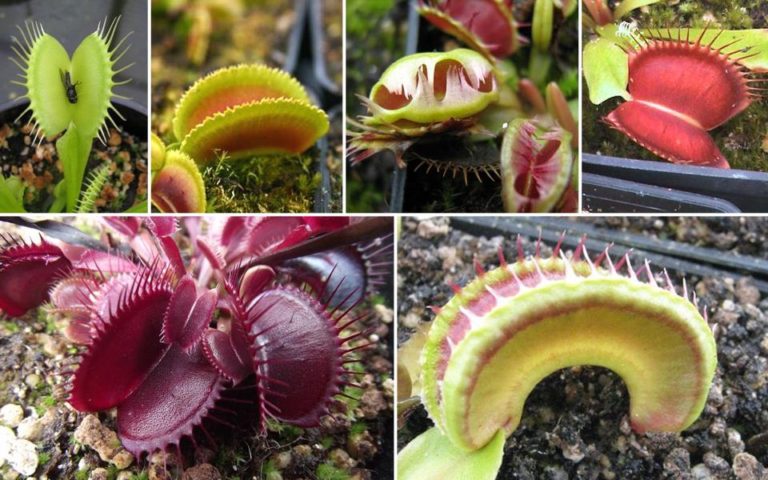Last updated: July 18, 2025
The Venus Flytrap is a fascinating carnivorous plant, native to boggy, nutrient-poor soils in the Carolinas. It's famous for its hinged, trapping leaves that snap shut to catch insects. While unique, it has very specific environmental needs to thrive.
Venus Flytraps require plenty of direct sunlight to grow healthily and develop vibrant red traps.
Ideal Outdoors: 6-12 hours of direct sun per day. A south-facing outdoor location where it gets full sun is best during its active growing season (spring to fall). In Maltby, WA, place it outdoors in the sunniest spot possible.
Ideal Indoors: If growing indoors, it needs exceptionally bright light. A very strong grow light (full spectrum LED, 6500K, 2000 lumens or more, placed 6-12 inches away) for 12-16 hours a day is often necessary to prevent it from becoming weak and pale. A bright, unshaded south-facing window might suffice if it receives several hours of direct sun, but often isn't enough.
Sign of good light: Traps will develop a reddish interior. Pale traps indicate insufficient light.
This is one of the most critical aspects of Venus Flytrap care. They need constant moisture and are extremely sensitive to chemicals in tap water.
Water Type: ONLY use distilled water, rainwater, or reverse osmosis (RO) water. Tap water, bottled spring water, and filtered water (like from a Brita) contain minerals that will quickly kill your Venus Flytrap by building up in the soil.
Method: Use the "tray method." Place the pot in a saucer or tray that is kept filled with 1/2 to 1 inch of water. This allows the plant to wick up water as needed. Or, use a planter which contains a water reservoir, and keep it filled.
Frequency: Keep the tray continuously filled with water during the growing season (spring to fall). Do not let the soil dry out. It should be obviously damp to the touch, even on the surface, but never sodden. The correct potting mix is essential.
Dormancy: During winter dormancy, reduce watering. The soil should remain damp, but not sitting in water.
DO NOT fertilize your Venus Flytrap with traditional plant fertilizers.
Their roots are adapted to nutrient-poor, acidic bogs and cannot process the salts in fertilizers. Fertilizers will burn their roots and kill the plant.
They obtain all necessary nutrients from the insects they catch.
Feeding Insects: If grown outdoors, they will catch enough insects on their own. If grown indoors and they aren't catching insects naturally, you can feed them live insects (like small crickets or mealworms) that fit inside the trap, about once a month during the growing season. The insect must be alive and moving to stimulate the trap and digestion. Do not feed them human food or dead insects that won't move.
Venus Flytraps appreciate high humidity, mimicking their boggy native habitat.
Beneficial: While not as critical as proper watering and light, maintaining high humidity helps them thrive.
Methods:
Growing them outdoors in a humid environment is ideal.
Indoors, use a humidifier nearby.
The tray method of watering also helps maintain local humidity around the pot.
Avoid direct misting of the traps, as this can trigger them unnecessarily and waste energy.
Pot Size: Venus Flytraps have surprisingly long root systems, despite their small appearance above ground. Choose a relatively deep pot, ideally 4-6 inches (10-15 cm) deep and at least 4-5 inches (10-13 cm) in diameter. Plastic pots are often preferred over terracotta, as terracotta can wick away moisture and leach minerals. Ensure the pot has drainage holes. Or, use a self-watering pot designed for carnivorous plants.
Soil Type: This is another critical factor. They require a nutrient-poor, acidic, and well-draining yet moisture-retentive substrate.
NEVER use standard potting soil, compost, or garden soil. These contain minerals that are toxic to Venus Flytraps.
The ideal mix is:
1 part Sphagnum peat moss (ensure it's pure peat moss, not peat moss with added fertilizers or "wetting agents")
1 part Horticultural perlite (rinse the perlite thoroughly before mixing to remove any mineral dust)
You can also use long-fibered sphagnum moss.
Venus Flytraps require a period of winter dormancy (typically 3-5 months, roughly November to February/March in the Northern Hemisphere). This is essential for their long-term health and survival. Skipping yearly dormancy will eventually kill the plant.
Signs of Dormancy: Growth will slow dramatically, leaves may become smaller, turn black, or die back. The plant may even appear to be entirely dead.
How to Provide Dormancy:
Outdoors: If you live in a suitable climate (USDA Zones 7-10), simply leave the plant outdoors. Temperatures between 32-50°F (0-10°C) are ideal. Protect it from prolonged, hard freezes (below 20°F / -6°C) by covering it or moving it to a sheltered spot if necessary. Keep the soil damp, but not sitting in water during dormancy.
Indoors (for colder climates): Place the plant in a cool, unheated room, garage, or even refrigerate it (after cleaning the plant and putting it in a plastic bag with some damp moss). Reduce light significantly during this period.
Baby plants may be separated from a large, healthy parent and repotted.
Flowering stems may be snipped and replanted.
